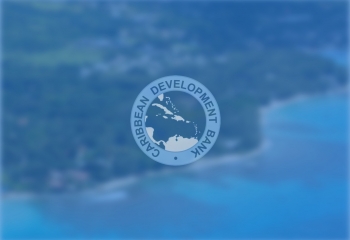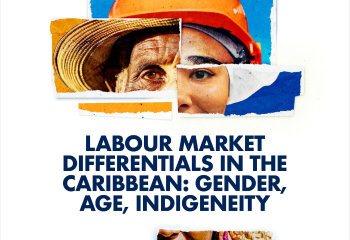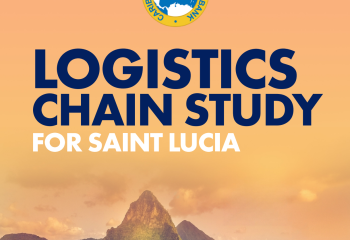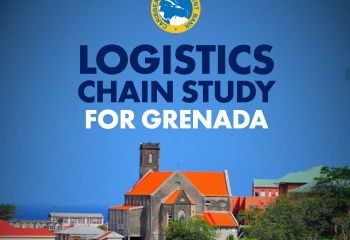High-level Political Forum on Sustainable Development
Excellencies, Distinguished Guests, Ladies and Gentlemen, allow me to thank the Forum organisers for the opportunity to share the views of the Caribbean Development Bank (CDB) on the role of vulnerability and resilience in sustainable development. Let me establish that sustainable development—defined as development which meets our current needs without hindering the ability of future generations to meet theirs—is a holistic concept, embodying the idea of advancing an ecosystem that is capable of self-perpetuation. Self-perpetuation is founded on resilience.
The Stockholm Resilience Center defines resilience as “the capacity of a system to deal with change and continue to develop”. It is about how humans and nature can use shocks like a financial crisis, climate change, or a pandemic to spur renewal. There is growing understanding that resilience is therefore complex and multi-dimensional, embracing resistance; recovery (the speed of return to some pre-shock performance level); reorientation (ability to adapt); and renewal (resume their pre-shock growth path). So, resilience encompasses many dimensions— social, institutional, productive capacity, environmental, and financial. Simply put, there can be no sustainable development without resilience.
Many developing countries, especially Small Island Developing States, continue to struggle with the increasing frequency of economic, environmental, and socio-political shocks. In the Caribbean, for instance, we face significant legacy structural weaknesses that have been amplified by the ongoing COVID-19 pandemic, the impact of climate change, and the fallout from the Russia-Ukraine war. These challenges have ruined productive activities, disrupted educational services, widened income and gender inequalities, and heightened food and energy security issues as supply chains faced major disruptions. Further, our countries remain among the most vulnerable and least resilient in the world, making the recovery from shocks of long duration. This combined cocktail, resulting in low competitiveness and productivity, has reduced the scope for the Region to realistically achieve many of the sustainable development goals by 2030.
The challenge before us is how best to navigate a safe path from legacy structural weaknesses to transformative development, while maintaining debt sustainability, enhancing macroeconomic and financial stability, and building resilience against shocks. This requires a holistic approach to development, creating a bridge between stabilisation and long-term transformation — in essence, integrating the debt sustainability framework of the International Monetary Fund, the investment-growth framework of the World Bank, and the resilience-building framework of the United Nations. Let me add that the coherence among these frameworks has to be underpinned by access to adequate and affordable finance.
We believe that vulnerability and resilience are two sides of the sustainable development nexus. Vulnerability can result from a loss of resilience and resilience can be slowed by changes in vulnerability. While vulnerability summarises why developing countries are not able to achieve higher potential development, it is unable to capture adequately how shocks increase vulnerability, reduce resilience, increase the duration to recovery, and limit sustainable development. Further, while several countries may face a similar likelihood of a hazard, their ability to recover from the shock while preserving the welfare of citizens can differ vastly. Many of our countries are stuck in the low resilience-high vulnerability quadrant of the development space and need to move to the high-resilience-low vulnerability quadrant for transformative development to occur. So, recognition of the vulnerability-resilience space mentioned by Prime Minister, Antigua and Barbuda, the Honourable Gaston Browne (net vulnerability) is most welcome.
Although considerable work has been undertaken on measures of economic vulnerability, which considers a country's susceptibility to external shocks (trade, health, climate) and geophysical hazards, resilience has not been comprehensively incorporated to give an all-round perspective of a country’s true welfare state and its capacity to recover after a shock. It is clear that the use of Gross National Income (GNI) for allocating countries’ access to finance does not on its own adequately capture the vulnerability-resilience dimensions of development, nor does it map well to the financing needs for development.
We therefore propose the Internal Resilience Capacity (IRC) and Recovery Duration Adjuster (RDA) as a forward-looking framework that incorporates both vulnerability and resilience in addressing the development challenge and providing a more equitable tool to underpin access to concessional finance. This IRC metric captures (pre-shock) the structural and vulnerability factors that regularly constrain growth and development; (the shock) distinguishes the magnitude, impact, and persistence of types of shock events; and (post-shock) incorporates factors (including exogenous, endogenous to policy interventions, state variables, and access to adequate and affordable finance) that influence resilience capacity and thereby the duration to recovery. This framework can provide an easily understood dashboard for gauging the resilience capacity of countries (Low, Medium, and High), and thereby eligibility to development or concessional finance that will depend on need and resilience capacity and less on past income levels. Let me add that the IRC framework meets all of the five principles articulated in the Secretary General’s report A/76/211: multidimensionality, universality, exogeneity, availability, readability, and resilience.
We supplement this detailed, universally applicable, transparent vulnerability and resilience model with a Vulnerability and Resilience Assessment Tool. This tool provides a deeper diagnostic of inherent vulnerabilities in the economic, social, and environmental dimensions as well as an assessment of resilience capacity across five major resilience dimensions — in other words, the national vulnerability-resilience profiles mentioned by Prime Minister, the Honourable Gaston Browne. It enables the design of policy recommendations to address key deficiencies and to build resilience; can be linked to national development goals and mapped to national budgets; can provide a measure of accountability as well as a bridge from existing measures of vulnerability to sustainable measures of resilience; and is consistent with performance-based allocation models used by International Financial Institutions and Multilateral Development Banks. The framework therefore underscores the principles of universality, exogeneity, and particularly resilience, with both global and national assessment perspectives.
The CDB framework, through the RDA, also proposes a resilience-adjusted per capita income measure that is better suited for and more equitable in allocating much-needed financial resources for developing countries, especially after crises. It proposes to address the issue of basing access to finance on pre-shock GNI, which is particularly onerous and inequitable when the magnitude of the crisis reduces GNI significantly and for long durations. The concept of duration to recovery, in turn, highlights the plight of countries facing multiple shocks within a period of recovery, a situation epitomised since the global financial crisis of successive shocks, including macroeconomic, natural hazards, and the pandemic. Importantly, it allows a measure of welfare/GNI loss relative to pre-shock levels that can be used to tailor the need for concessional finance.
Going forward, we need to ensure that resilience, an investment for achieving sustainability and less need for perpetual support, becomes a key element of any framework endorsed by the United Nations and I hope this would be reflected in the resolution coming from the deliberations of this conference. Given the alignment with the points articulated by the co-chair Prime Minister the Honourable Gaston Browne, let me close in underlining our eagerness to partner with the United Nations, Alliance of Small Island States, and other international institutions especially on advancing the quantitative analysis and simulations to estimate the internal resilience capacity and duration gap for all countries in the United Nations database. This would underpin the universality of the framework while paying special attention to the peculiar needs of small states and developing countries.
Excellencies, let us take this framework forward so that we could guarantee the sustainable livelihoods of the peoples of our respective Regions.
I thank you.



